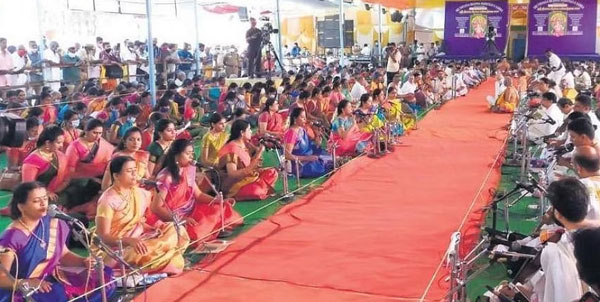
Thiyagaraja Aradhana is the annual aradhana of Telugu saint composer Thiyagaraja. The festival is observed in the states of Andhra Pradesh and Tamil Nadu, primarily in Tiruvaiyaru, the place where Tyagaraja attained Samadhi. The aradhana is observed on Pushya Bahula Panchami day when the saint attained samadhi, where the musicians will render the saint’s Pancharatna Kritis.
Pongal festival is the harvest festival of Tamil Nadu that falls in the month of Thai (January-February season). The uniqueness of the festival reminds us of the importance of natural resources, especially when the entire world is battling environmental change. Indian is a land of festivals. Every festival is celebrated with enthusiasm. It also represents our culture. Among other festivals, Pongal is also one of them.
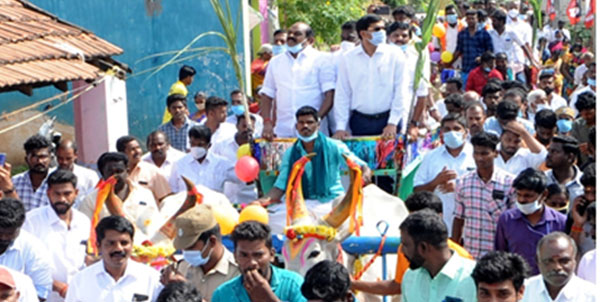
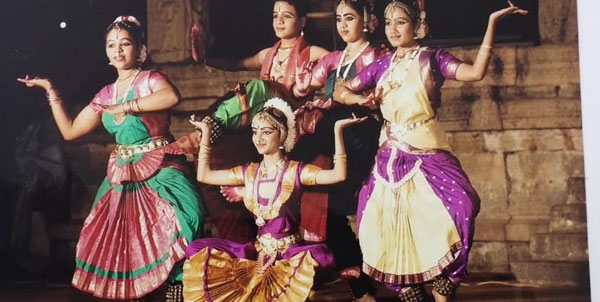
An Annual International Indian Classical Dance Festival, held in Brihadeeshwara Temple of Tanjore. The Brihadeeshvara Temple at Thanjavur is the site of annual dance festival Brahan Natyanjali around February every year, around the Hindu festival of Mahashivaratri.
Imagine, I am told, school kids tidying up the Cauvery and her shorelines at Thiruvaiyaru as part of a community campaign that engages them in the goings-on. Imagine the Kalyan Mahal Ghat also looks spiffy and a stage is set at the top. Imagine dusk has fallen, fresh floral decorations are in place, and hundreds of earthen lamps are lit up. But because you can’t be craning your neck to see the performers from the bottom of the steps, the audience must be moved away. It’s logical. So imagine there’s a bamboo bridge over the sparse puddle of water that’s the river here, and we can climb over it to sit on the opposite sandbank. I have been to Thiruvaiyaru more than once. It’s really quite hard to imagine all this. The one exception is Prakriti Foundation’s Festival of Sacred Music (www.festivalofsacredmusic.com), now in its seventh edition, during which the nondescript town and its invisible history is revived into something magical. Curator-catalyst Ranvir Shah, Prakriti’s founder, not only conceived of such a setting, this past spring he had 45 Manganiyars from Rajasthan performing for a 1,000-strong audience in the deep heart of rural Tamil Nadu.
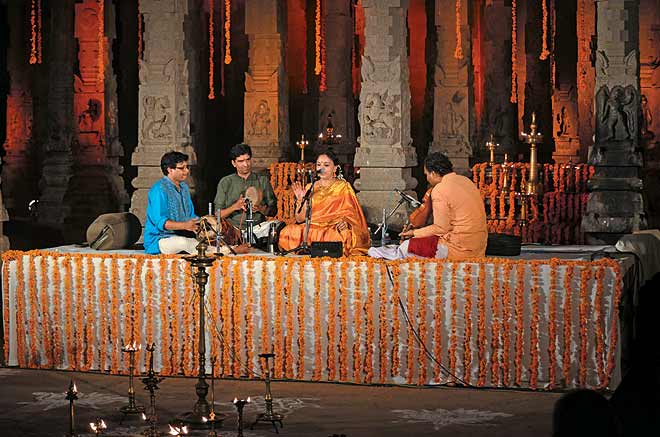

The Masimaham is an annual event that occurs in Kumbakonam in the Tamil month of Masi (February–March) in the star of Magam. Vast crowds of Hindu devotees gather at Kumbakonam to have a dip in the tank. All the rivers of India are believed to meet at the tank on this day and a purificatory bath at this tank on this day is considered equal to the combined dips in all the holy rivers of India. Festival deities from all the temples in Kumbakonam arrive at the tank and at noon, all the deities bathe along with the devotees – it is called “Theerthavari”. The purificatory bath is believed to remove sins and after the dip, pilgrims offer charitable gifts in the hope of being rewarded in the current life and subsequent lives. The temple cars of major temples in Kumbakonam come around the city on the festival night. During the Mahamaham of 1992, the number of devotees were estimated to be one million.
Temple cars or Temple chariots are used to carry representations of Hindu gods around the streets of the temple on festival days. These chariots are generally manually pulled by the devotees of the deity. As of 2004, Tamil Nadu had 515 wooden carts, 79 of which needed repairs. Annamalaiyar Temple, Tiruvannamalai, Chidambaram Natarajar Temple are among the temples that possess these huge wooden chariots for regular processions. The Natarajar Temple celebrates the chariot festival twice a year; once in the summer (Aani Thirumanjanam, which takes place between June and July) and another in winter (Marghazhi Thiruvaadhirai, which takes place between December and January).


Bhagavata Mela is a classical Indian dance that is performed in Tamil Nadu particularly the Thanjavur area. It is choreographed as an annual Vaishnavism tradition in Melattur and nearby regions, and celebrated as a dance-drama performance art. The dance art has roots in a historic migration of practitioners of Kuchipudi, another Indian classical dance art from Andhra Pradesh to the kingdom of Tanjavur. The term Bhagavata, state Brandon and Banham, refers to the Hindu text Bhagavata Purana. Mela is a Sanskrit word that means “gathering, meeting of a group” and connotes a folk festival. The traditional Bhagavata Mela performance acts out the legends of Hinduism set to the Carnatic style music.
Anbil Mahesh Poyyamozhi, School Education Minister, officially opened the 11-day Thanjavur Book Festival on Friday. Speaking to reporters after opening the book exhibition at the Thanjavur Palace Grounds organised by the Thanjavur District Administration, the Directorate of Public Libraries, the Thanjavur Tourism Promotion Council, and the Booksellers and Publishers Association of South India, the Minister explained that the exhibition was being organised in accordance with Chief Minister M. K. Stalin’s announcement that book exhibitions would be held at all the state’s public libraries. Although 104 booths were originally intended for the show, the response from bookstores and publishers led to the addition of six more booths, bringing the total to 110, he added. From July 16 to July 25, the book fair will be open from 10 a.m. to 8 p.m. According to government sources, elaborate plans have also been established for the morning literary events and competitions for students in high schools and colleges, as well as the evening cultural programmes, folk art programmes, and other events that will take place at the book fair area.


This is customary functions celebrating every year in the month of September, just to bring awareness among the general public about the importance of Tourism and benefit. It has been traded by WTO.
Navratri, meaning ‘nine nights’, is one of the most popular and widely celebrated Hindu festivals in many parts of India. Each night, all over the state, villages and cities alike, people gather in open spaces to celebrate feminine divinity, referred to as Shakti. The dance form known as ras garba (also joined sometimes by dandiya, which uses small wooden sticks), comes from Lord Krishna’s worship rather than Goddess worship, from the Gop culture of Saurashtra and Kutch. Stories of relationships between Krishna and the Gopis, and their emotions, also often make their way into the ras garba music. Nevertheless, the focal point of every garba circle is the small Goddess shrine erected by each community to mark the beginning of the festival, on the first day of the Hindu month of Ashwin. The shrine includes a garbo, an earthenware pot, in which a betel nut, coconut, and silver coin are placed.

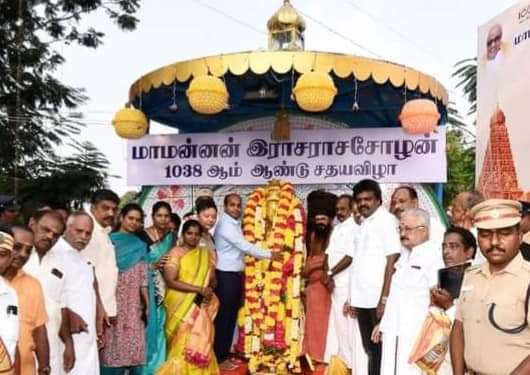
The ‘Sadhaya Vizha’ is conducted in a grand manner each year to mark the birth anniversary of Emperor Raja Raja Chola.
Salangai Naadam, the cultural event organized by the South Zone Cultural Centre in Thanjavur acts as the bridge to ensure cultural diversity. “Salangai Naadam will acquire a special place in the cultural landscape of India and thus attract more craftsmen and young artisans to come up with their exhibits. Over the years, the festival has acquired a place in the hearts of art lovers, not alone in Southern India, but in all parts of the country, where artists from this region have performed,” said the governor in his speech at the culmination program in Thanjavur on Monday evening.
He appreciated about the role of the seven zonal cultural centres for promoting, propagating and preserving the cultural wealth by organising programmes on the various art forms, arranging training programmes and workshops etc and also by documenting the rare works of art.
“Their mission has been to promote National Integration through culture and to raise the level of awareness and about our cultural heritage among the common people of our country. The South Zone Cultural Centre has been involved in numerous cultural exchange programmes and artistes from various parts of the country are being invited to perform in the programmes of the cultural centres,” said Purohit.

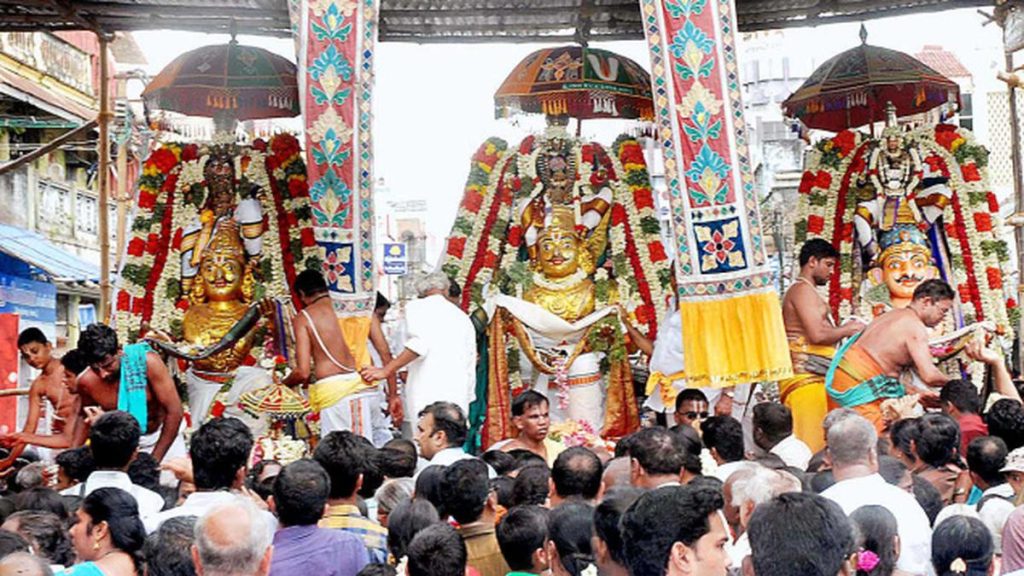
Special pujas and rituals in various temples in the holy town marked the occasion of Akshya Tritiya on Tuesday with the highlight being the grand Garuda Sevai when deities from several important Vishnu temples in Kumbakonam lined up at the Big Street here to offer darshan for close to two hours.
The annual Garuda Seva involving multiple temple deities is a watershed event in the religious annals of Kumbakonam and thousands of devotees gathered from far and near to witness the spectacle . Though usually 12 deities assemble at the huge pandal specially put up for the occasion, this year processional deities from Ramasamy, Chakrapani and Sarangapani temples could not make it to the Garuda Seva as balalayam had already been performed at those temples.
The Thanjavur Tourism Promotion Council has launched a WhatsApp Channel specifically for Thanjavur Tourism. Kindly invite your friends interested in exploring Tourism & Heritage to join us. Let’s contribute to the promotion of Thanjavur Tourism together!
Copyright © 2023 Thanjavur Tourism Promotion Council. Developed & Hosted by YOGA’S IT Solutions.